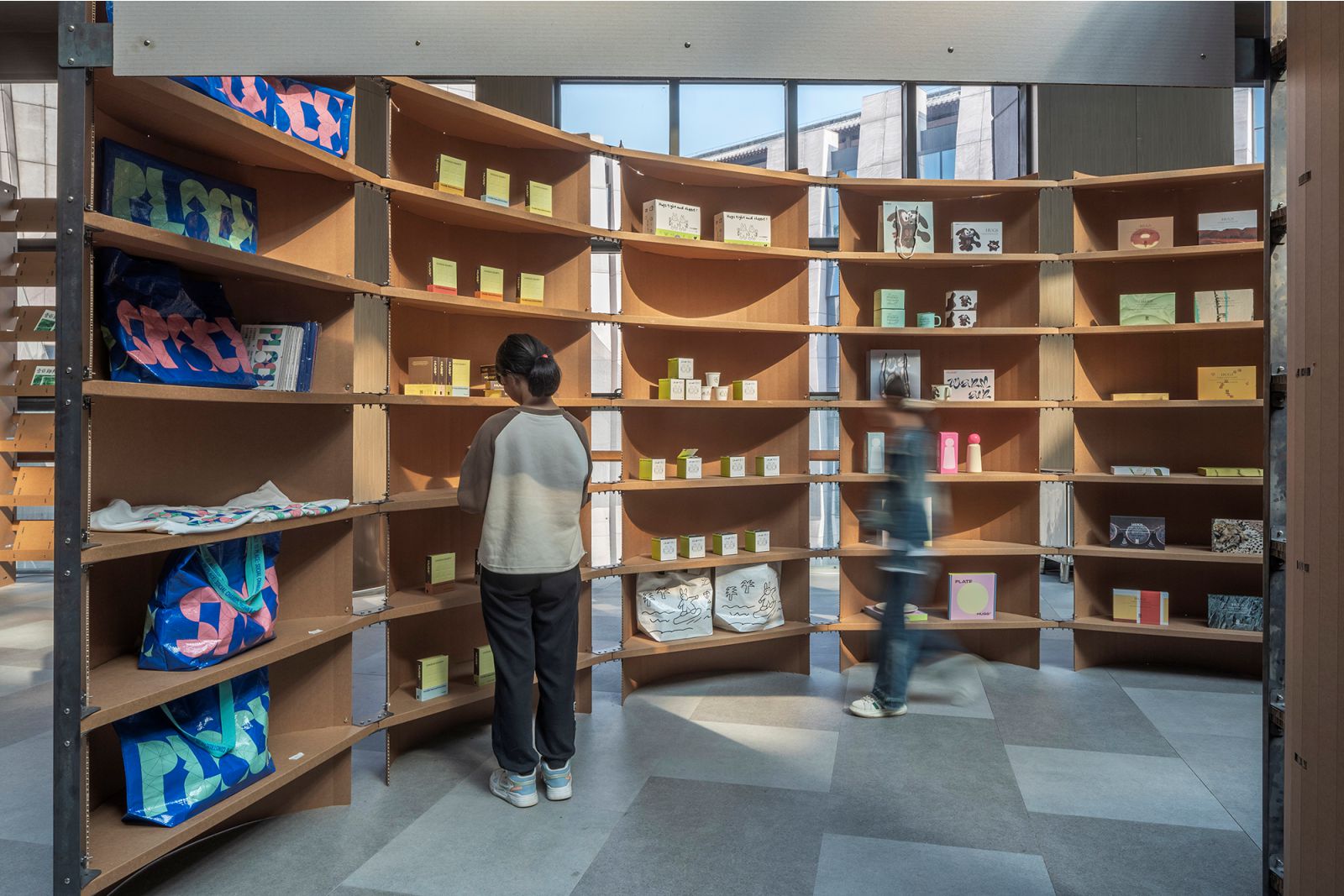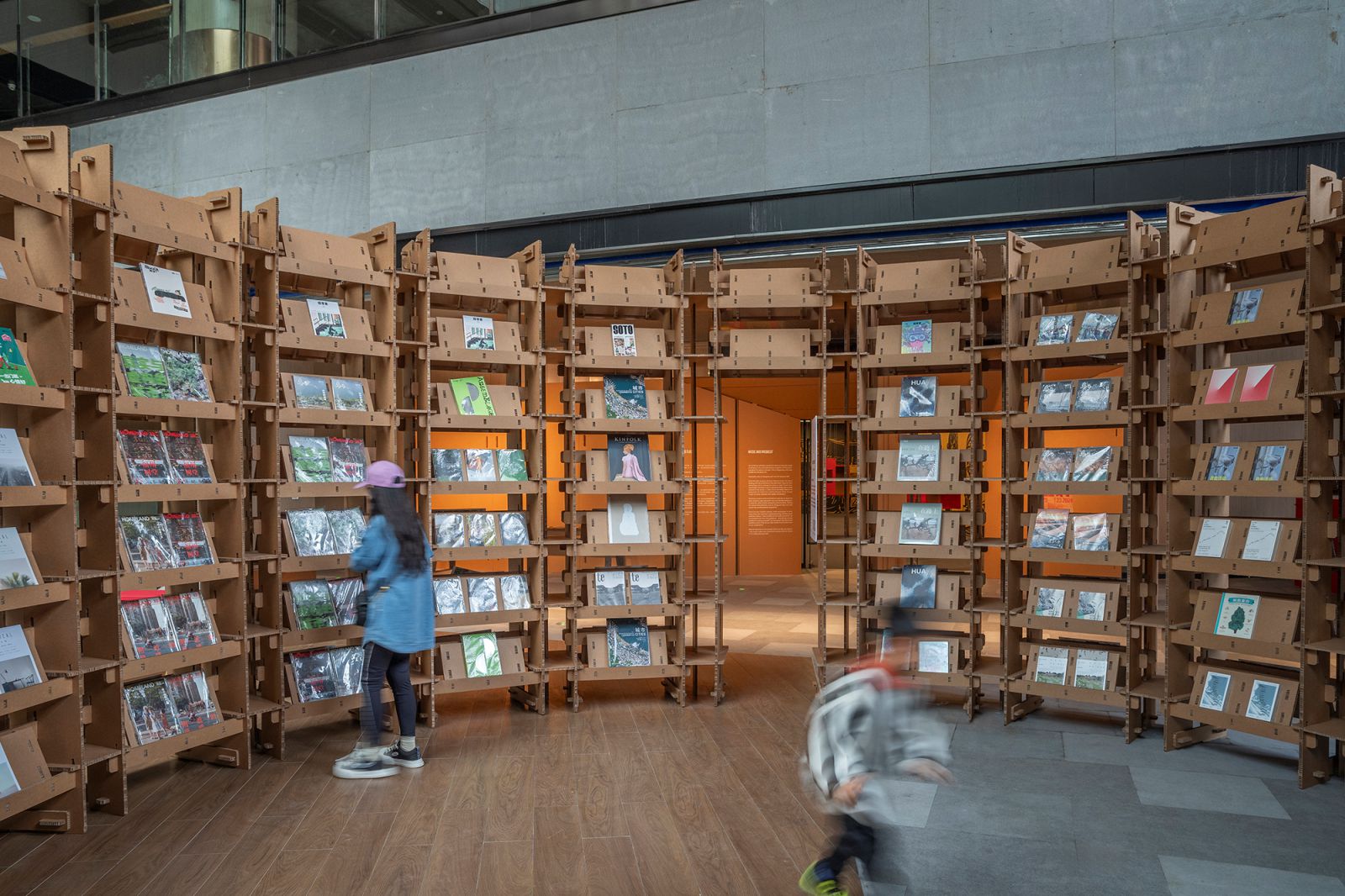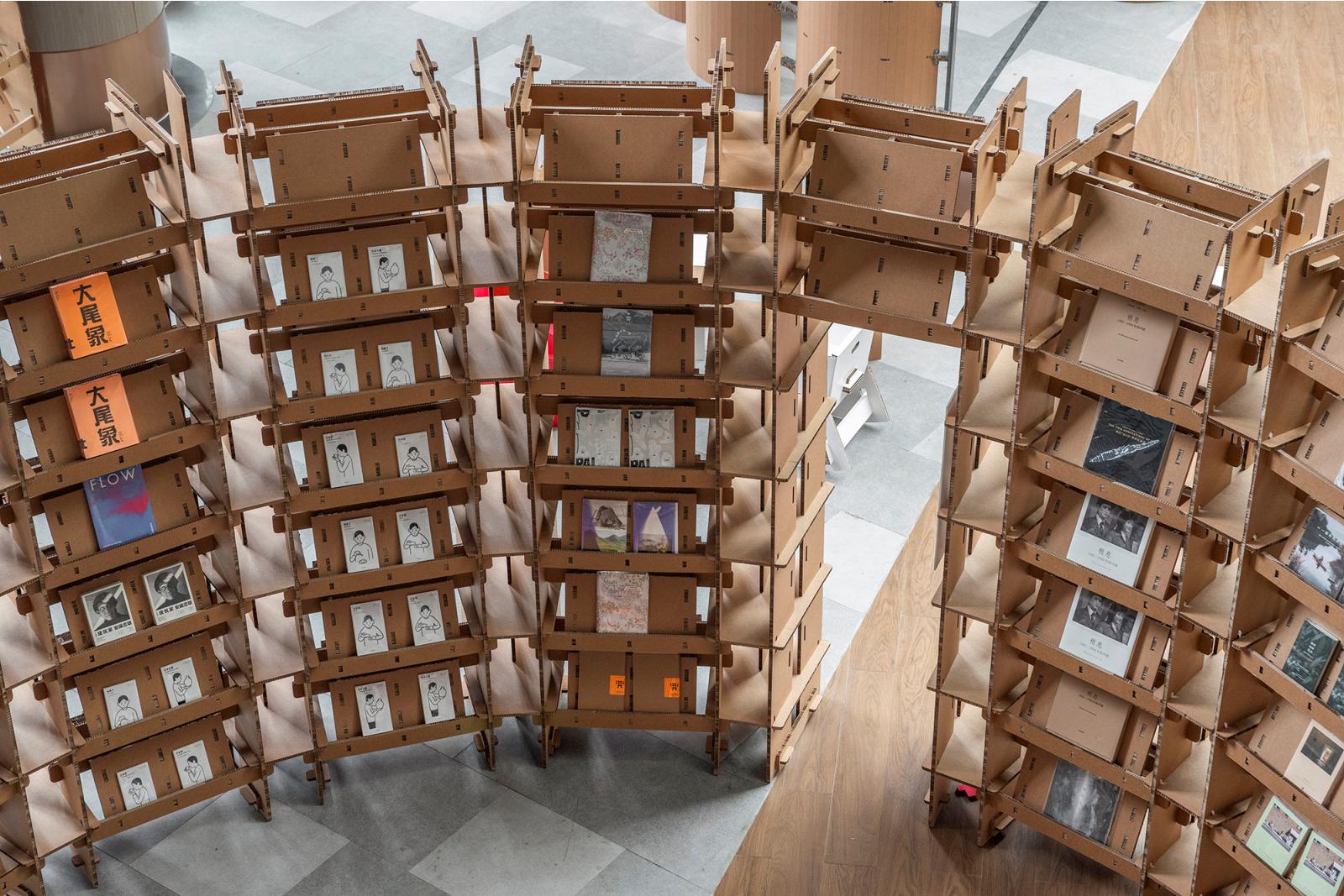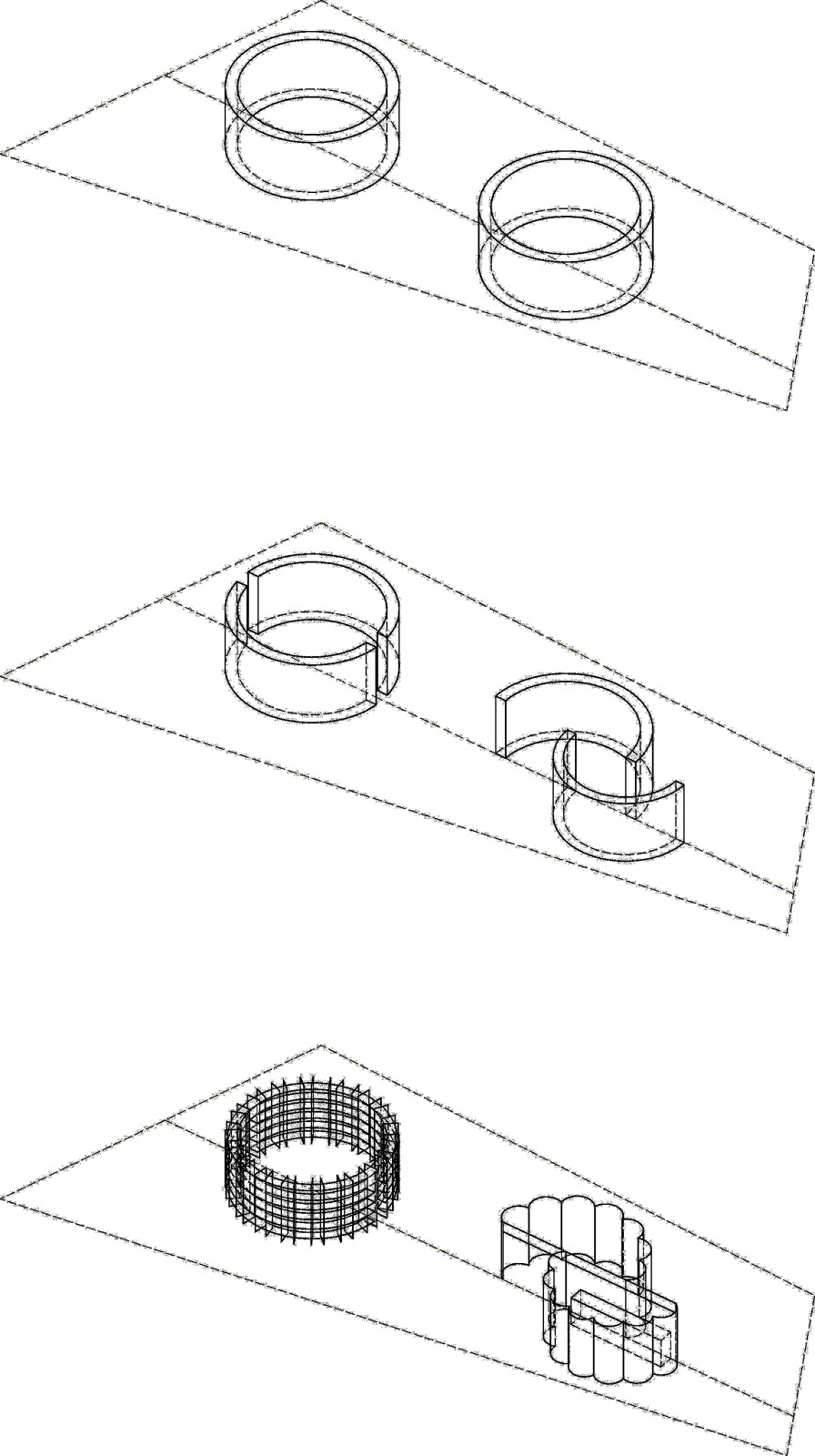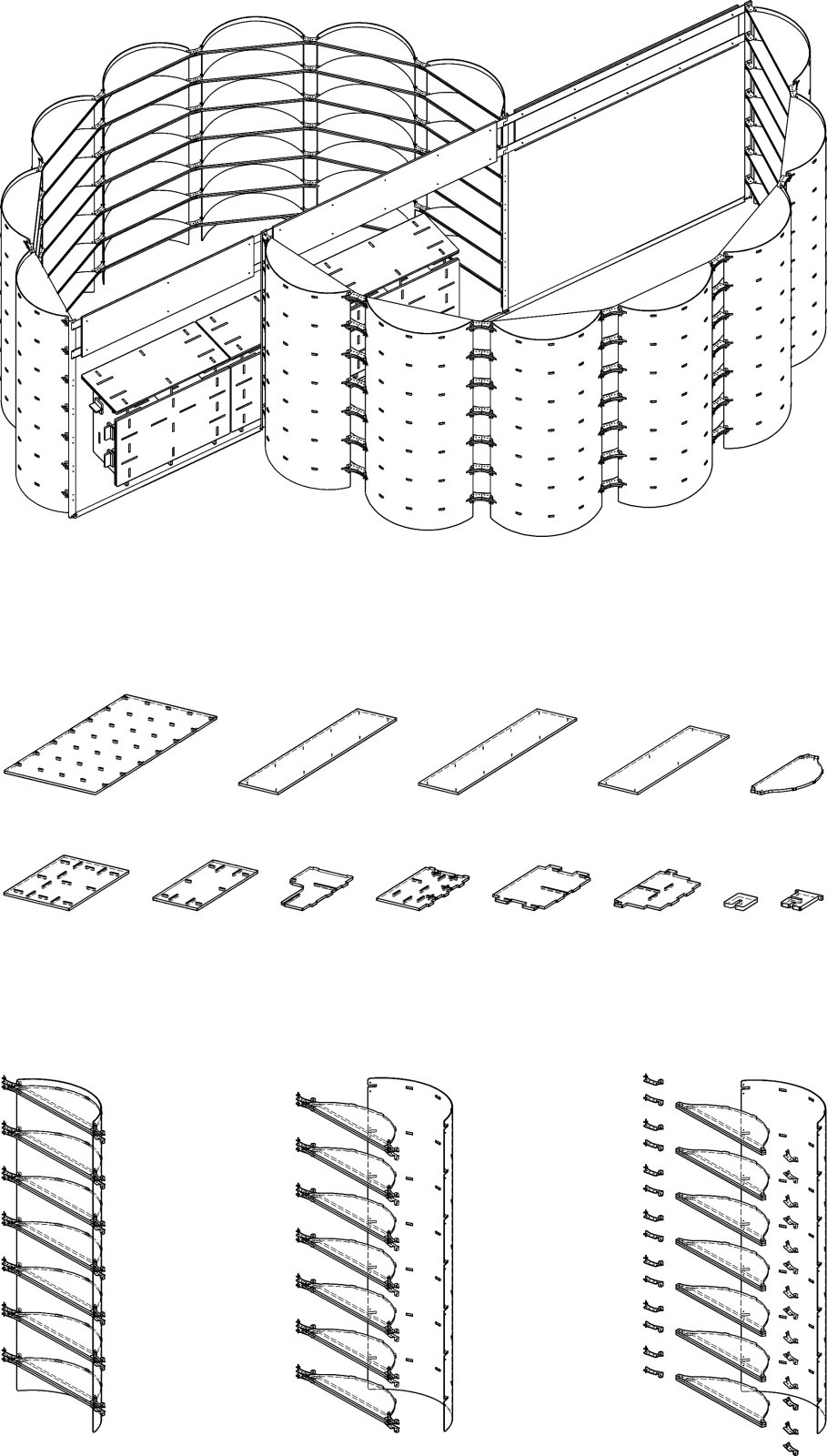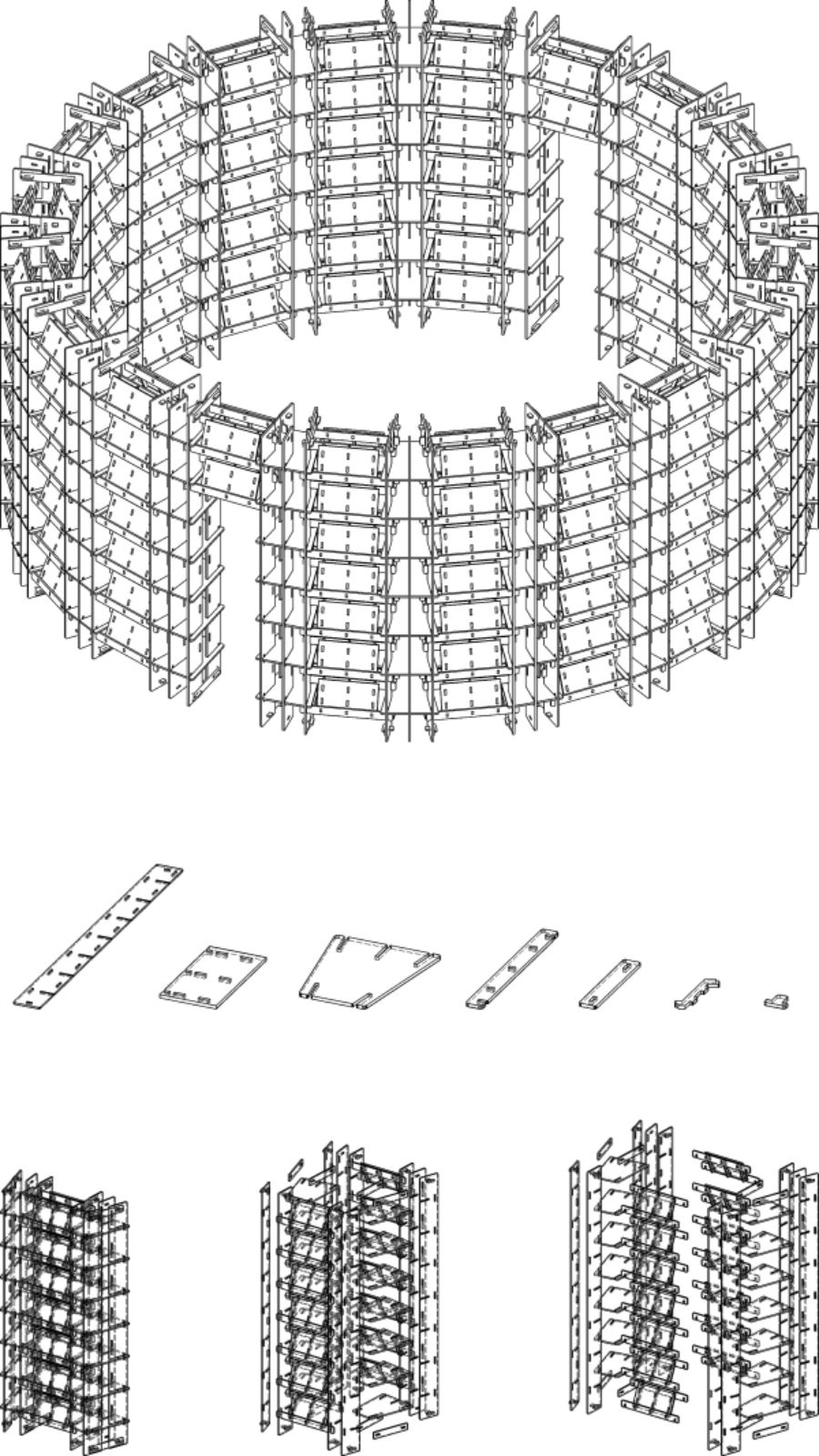Following Cardboard-formed Exhibition Space 1.0 (the setting for “Back to the Future: Breaking the Time Barrier” exhibition at the Power Station of Art, 2021) and the Cardboard-formed Exhibition Space 2.0 (the exhibition space for Xinyang Book Market: Books ‘N Tea, 2023), curator Zuo Jing again worked with LUO studio to continue exploration into the sustainable design practices of constructing exhibition space with corrugated cardboards.
From cardboard-formed exhibition space to cardboard-formed “house”
Based on the previous practices of cardboard-formed exhibition space 1.0 and 2.0, LUO studio this time has built two “houses” by the use of corrugated cardboards, which is a development of their exploration on the design and installation of exhibition settings by using this paper-based material. The exhibition debut at Båt Odes to the Land, themed on “From Space to Place: Social Changes, Design and Constructs in the Shadow of Globalization”, includes 10 exhibitions and a couple of performances, film showings, forums and workshops.

Key words like sustainable design and circular economy are highlighted by the event’s chief curator Zuo Jing, and thus are reflected in the two “paper houses” constructed in the exhibition space. The goal is to repurpose and activate the existing commercial space through art and design exhibition. Meanwhile, it’s important to build fun and ritualistic connection between the new exhibition space (repurposed from commercial space) and the public area. Exhibition is temporary, but space activation is a consistent goal.
Therefore, it’s vital to link the art exhibition with urban life through active construction interventions. The public area requires functions like catering and reading to support the exhibition event. After an open recruitment campaign, local brands HUGS COFFEE and DOGHOOD settled in the public area of the exhibition venue, as the users of the “coffee house” and the “book house”. This is the background story of the two “paper houses”.

In line with the trapezoid plane
The two “paper houses” are set on a relatively large platform on the second floor of the venue, and the site is in a trapezoid shape on the plane, narrower at one end and wider on the other side. Corrugated paper has been used to construct the two “houses”. Compared to other building materials, it is more brittle and unstable when subjected to stress. To realize high level of stability, a circular plane becomes the best choice for the two “houses”.
Two “houses” with circular planes are configured on the trapezoid platform. The “coffee house” faces the narrow side of the platform to embrace visitors, as it’s closer to the elevator. Considering that an entire circular plane could make the space cramped, the designers divided a complete circle into two semicircles with varied sizes. This has ensured the stability of the curved spaces, while also creating an open take-away area and a more internal display and sales area.

In addition, such design also guides the human flow towards the wider side of the trapezoid platform, and leads to the “book house” featuring a complete circular plane. The “coffee house” is a place for energizing and relaxing physically, while the “book house” caters to spiritual needs, with its circular design highlighting a sense of rituality.
Construction scale based on cardboard specifications
Based on two basic sizes of the corrugated cardboards, which are 3m x 1.5m and 2.4m x 1.2m, the “coffee house” is designed with a height of 2.4m for easier reach of items and ingredients, while the “book house” utilizes cardboards with a full height of 3m, to strengthen a sense of wrapping. With consideration into site restrictions and the need for guiding the circulation, the “coffee house” adopts two separate semicircles on the plane.
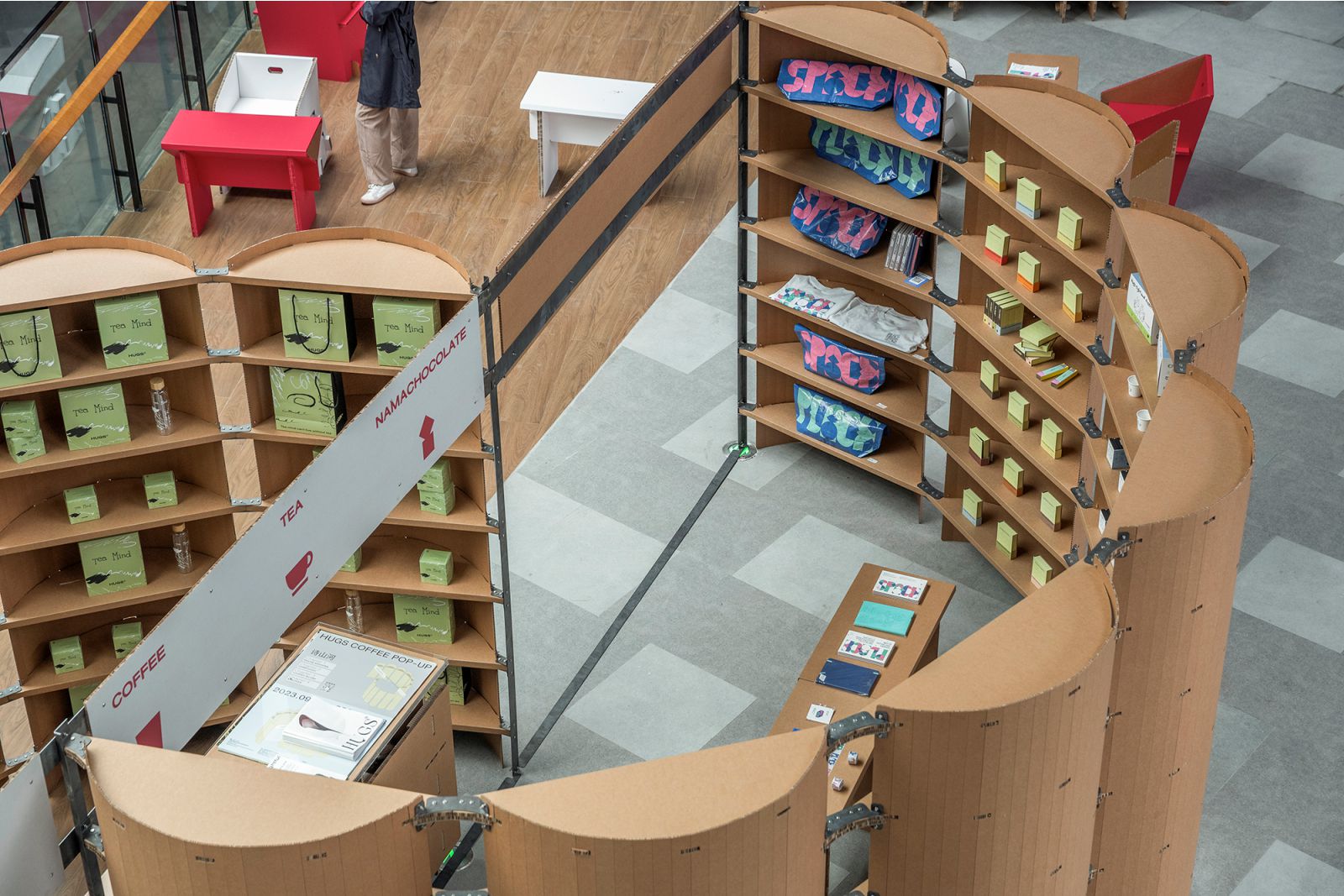
The drawback of such layout is that the structural mechanics relationship is relatively loose. For this reason, necessary small-section metal components are utilized to reinforce the entire construction, which also connect the diameters of the two semicircles into one integrated straight line. To enhance the stability, two parallel metal connecting rods are set on the top, which leads to surprising outcomes. In specific, the space in between the two metal rods can be used to place the logo sign of the cafe, and in turn the signboard further stabilizes the two metal rods on their fixed positions.
The circular bookstore space has a diameter of 7m, and the whole structure is evenly divided into 18 full-height bookshelf units. The two ends of the central diameter are carved out with a door opening. The line connecting the two openings coincide with the line that demarcates two kinds of floorings, which builds a connection between the internal space of the bookstore with its external setting in the public space.

Rapid assembly & reversible construction
The corrugated cardboard used is a paper-based material with a relatively high strength. Based on several rounds of tests in the factory and the previous design practices of Cardboard-formed Exhibition Space 1.0 and 2.0, it has been confirmed that this material can be repeatedly assembled, disassembled and reassembled many times, thus realizing long-term and repeated reuse. For example, the corrugated cardboard tables installed in Cardboard-formed Exhibition Space 1.0 were recycled by multiple public welfare organizations and were then assembled and reused, and the exhibition walls were repurchased and directly moved from the Power Station of Art in Shanghai to the Båt Odes.
Due to the reorganization of space, the bookshelves in Cardboard-formed Exhibition Space 2.0 underwent a process of “disassembly – removing – moving back – and reassembling”, after which the stability and aesthetics still remain well. It is conceivable that the two “paper houses” can also be dismantled after the exhibition and can achieve sustainable reuse as well like its predecessors. Source by LUO Studio.
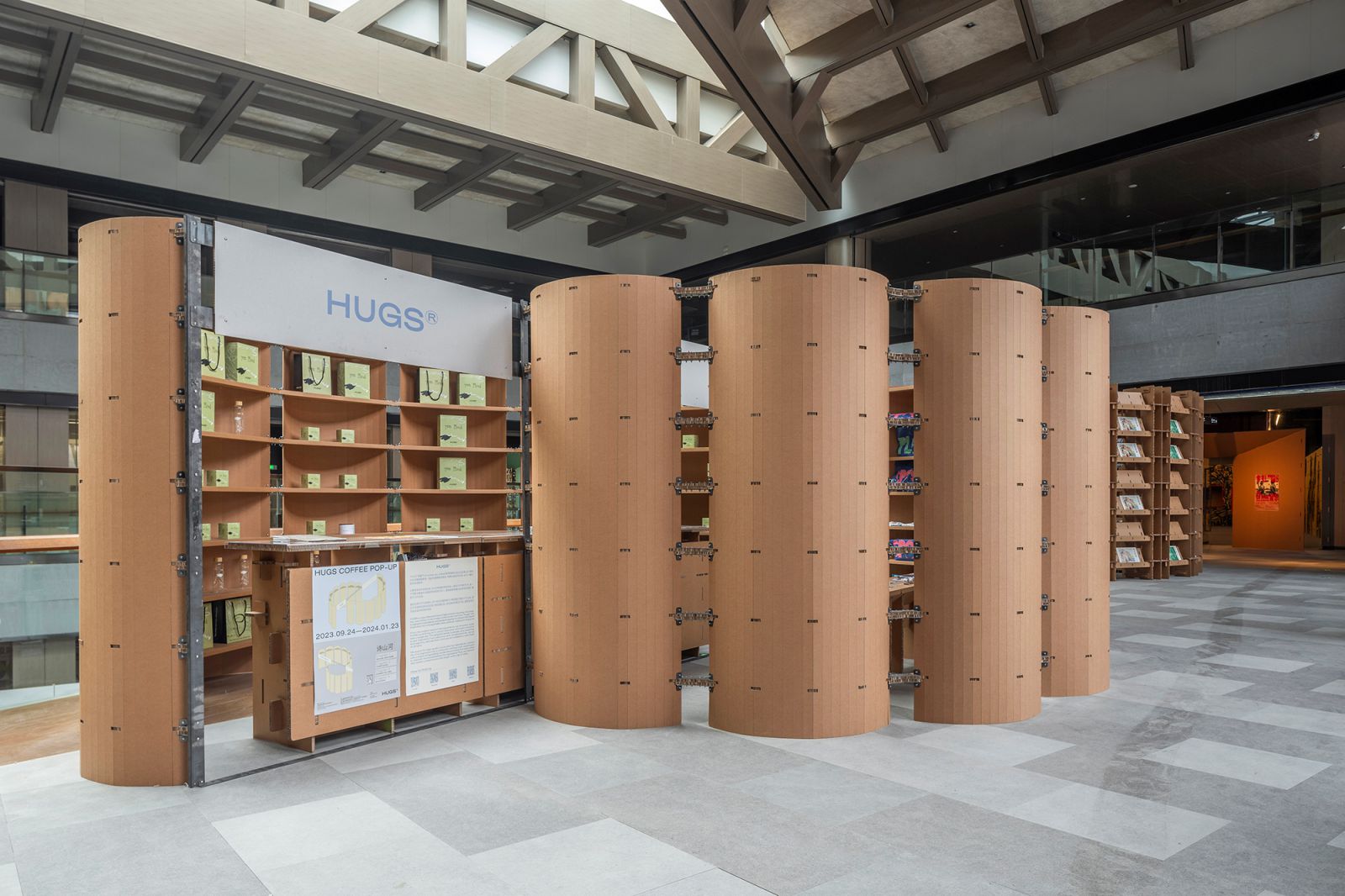
- Location: 2F, Mall, Zhengzhou Garden Expo Park, Henan, China
- Architect: LUO studio
- Design and construction instruction: Luo Yujie, Lu Zhuojian, Wang Beilei, Hong Lun
- Corrugated cardboard supplier: Kunshan Three Doves Paper Design Studio Co., Ltd
- Construction & installation: Shinewood Building Technology (Beijing) Co., Ltd.
- Client: Zhengzhou Airport Park Expo Management Co., Ltd.
- Project area: coffee house (22.26 sqm) + book house (38.48 sqm)
- Time: Oct. 19 – 23, 2023
- Photographs: Jin Weiqi, Luo Yujie, Courtesy of LUO studio
